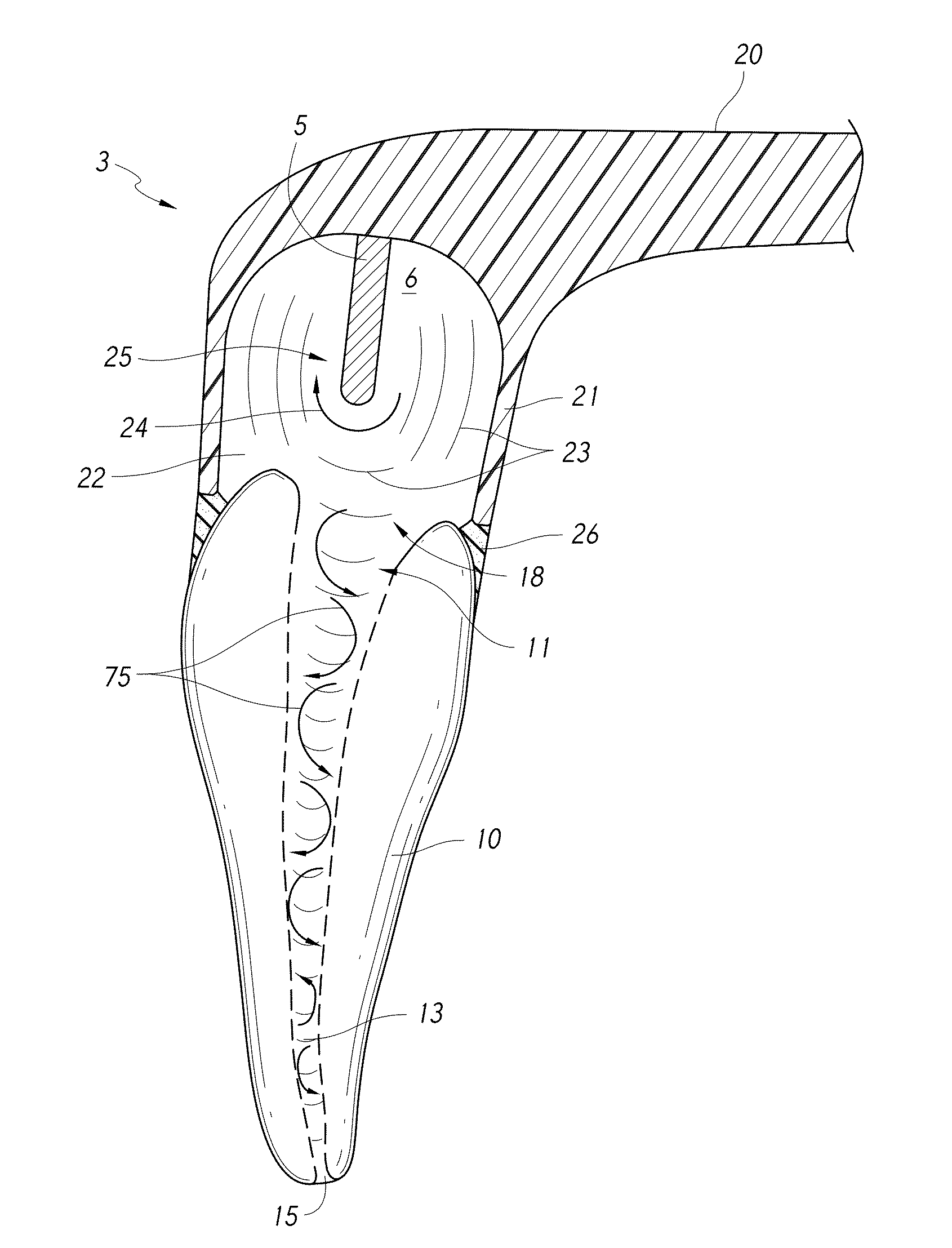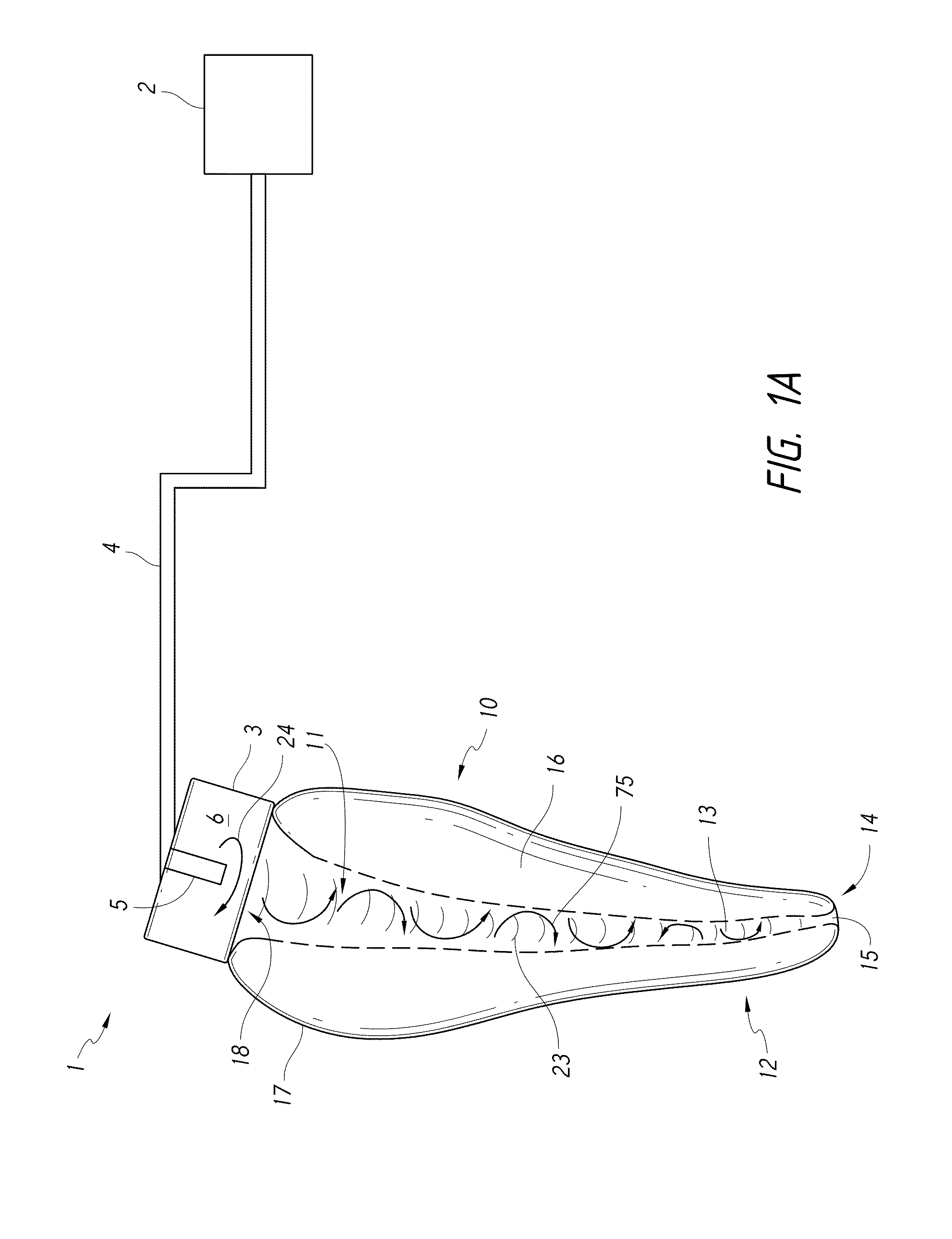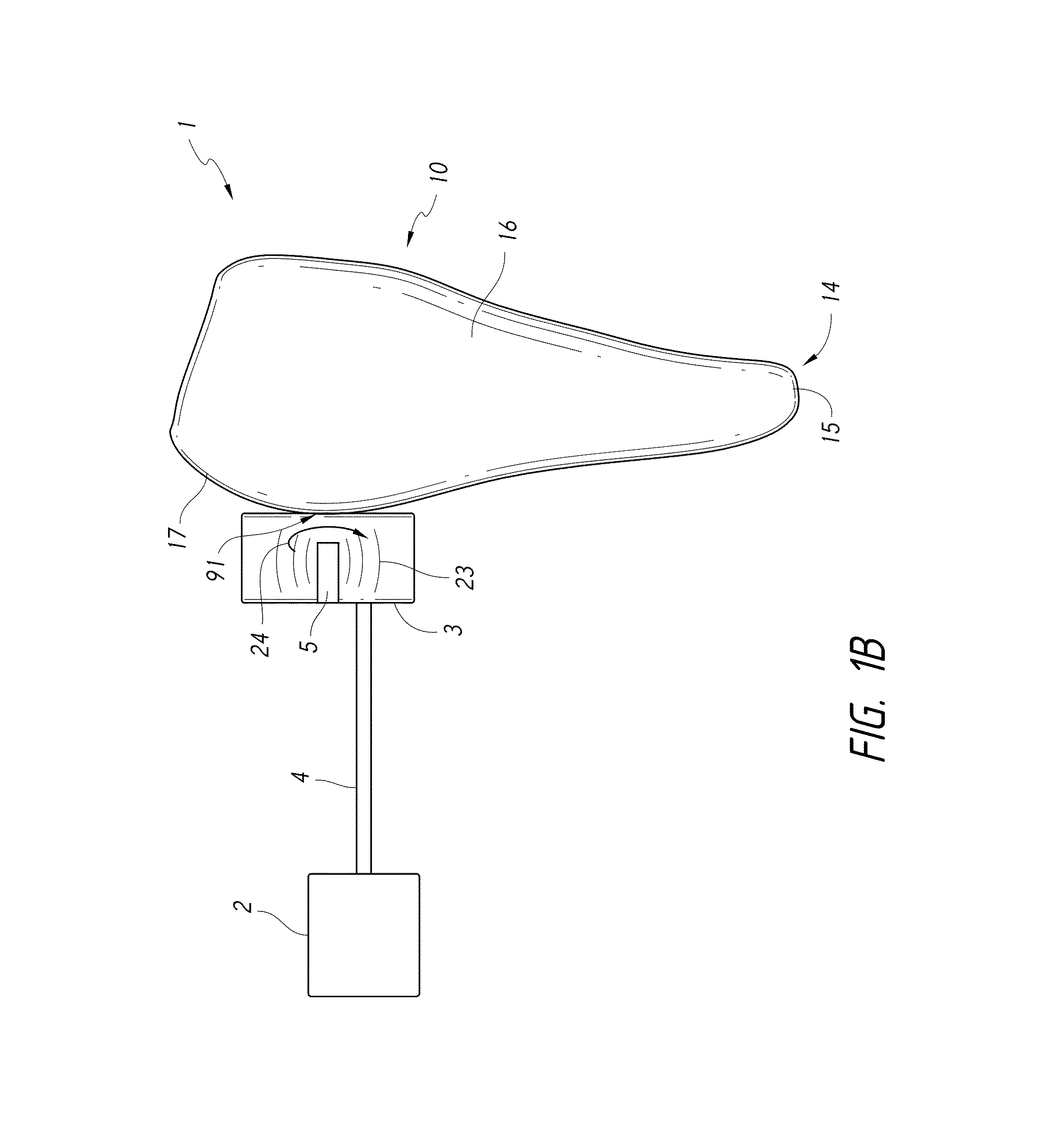Apparatus and methods for cleaning teeth and root canals
a technology for cleaning teeth and root canals, applied in the field of dental and endodontics, can solve the problems of soft tissue trauma, painful procedures for patients,
- Summary
- Abstract
- Description
- Claims
- Application Information
AI Technical Summary
Benefits of technology
Problems solved by technology
Method used
Image
Examples
Embodiment Construction
[0051]The present disclosure describes apparatus, methods, and compositions for performing dental and / or endodontic procedures. Various embodiments disclosed herein can effectively and safely remove unhealthy material from a treatment region of a tooth, e.g., from within the tooth and / or from outside surfaces of the tooth. In particular, the embodiments disclosed herein can remove unhealthy materials, such as unhealthy organic matter, inorganic matter, pulp tissue, caries, stains, calculus, plaque, biofilm, bacteria, pus, decayed tooth matter, and food remnants from the treatment region without substantially damaging healthy dentin or enamel. For example, the disclosed apparatus, methods, and compositions advantageously may be used with root canal cleaning treatments, e.g., to efficiently remove unhealthy or undesirable materials such as organic and / or inorganic matter from a root canal system and / or to disinfect the root canal system. Organic material (or organic matter) includes o...
PUM
 Login to View More
Login to View More Abstract
Description
Claims
Application Information
 Login to View More
Login to View More - R&D
- Intellectual Property
- Life Sciences
- Materials
- Tech Scout
- Unparalleled Data Quality
- Higher Quality Content
- 60% Fewer Hallucinations
Browse by: Latest US Patents, China's latest patents, Technical Efficacy Thesaurus, Application Domain, Technology Topic, Popular Technical Reports.
© 2025 PatSnap. All rights reserved.Legal|Privacy policy|Modern Slavery Act Transparency Statement|Sitemap|About US| Contact US: help@patsnap.com



